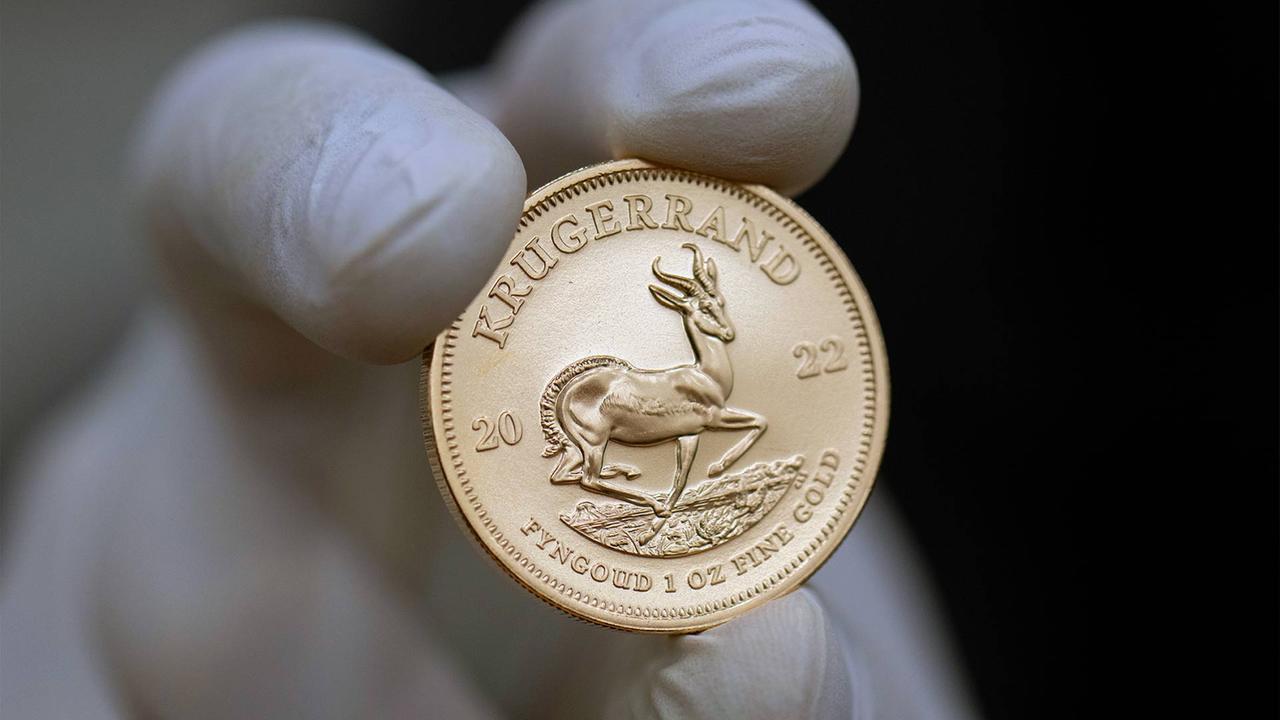background
Anyone who wants to invest their money in gold is spoiled for choice: bars, coins, funds, certificates – or would you prefer ETC? What advantages and disadvantages these forms of investment have – including when it comes to taxes.
The “safe investment haven” gold is in greater demand than ever before in the history of the stock market. The yellow precious metal is jumping from record to record, the most recent record being from Wednesday: a troy ounce of gold (around 31.1 grams) cost a peak of $2,758 on the London Stock Exchange.
This means that there has already been an increase of over 30 percent since the beginning of the year. “As things stand, that would be the strongest annual increase in 45 years,” said raw materials expert Carsten Fritsch from Commerzbank. Above all, the prospect of falling interest rates and the fear of a further escalation of the situation in the Middle East are driving demand for the precious metal ever higher.
Invest five to ten percent in gold?
So should private investors also invest in gold? In fact, many financial experts recommend adding gold to your portfolio. The target is usually a share of five to ten percent for the yellow precious metal – diversification is the key word here.
By investing in different asset classes in their portfolio, such as stocks, bonds and precious metals, investors can minimize their risks and at the same time increase the stability of their portfolio.
Coins such as the Krugerrand or mini bars
But what options are there for private investors to invest in gold? The classic and most direct way is to buy physical gold – for example in the form of coins. Experts recommend heavily traded coins with a high proportion of fine gold such as Maple Leaf, Vienna Philharmonic and Krugerrand.
Investors can also buy gold bars weighing from one gram to 12.5 kilograms – depending on their budget. However, mini bars, i.e. gold bars weighing one, two or five grams, usually have a high surcharge compared to the gold price on the stock exchange. The so-called spread, i.e. the difference between the buying and selling price, is also significantly higher for small bars. All of this significantly reduces the return that investors can achieve.
There is also the problem of storage. Unless you want to stack the bars at home – which is not recommended. Bank lockers offer a high level of protection, but there are also costs.
Investors can buy gold bars in different sizes.
Gold-Mutual funds and certificates
Many investors therefore choose to invest in gold investment funds or certificates. These can easily be purchased on the stock exchange, the difference between the buying and selling price is marginal, and the storage problem no longer applies.
However, many gold investment funds invest not (only) in physical gold, but also in shares of mining operators and in fixed-interest securities – so the development does not only depend on the price of gold on the stock exchange. In addition, there are often issuing surcharges and sometimes high management fees, which can quickly eat up returns.
The fees for gold certificates are significantly lower, but these are usually not backed by physical gold. Critics therefore speak contemptuously of “paper gold”. Funds such as certificates also involve an issuer risk: If the issuer of the financial instrument goes bankrupt, the money invested will most likely be lost.
Gold ETC backed with real gold
An alternative are gold ETCs, in which the provider physically deposits the gold investment with real gold bars, thereby reducing the issuer risk. The abbreviation ETC stands for “Exchange Traded Commodity”. Like ETFs, ETCs can be bought and sold on the stock exchange.
The best-known gold ETC in this country is the XETRA Gold issued by the Deutsche Börse. This is 100 percent secured with gold: for each share certificate, exactly one gram of gold is deposited in the Deutsche Börse vaults. Anyone who owns shares of XETRA-Gold can have the corresponding amount of gold delivered to their bank if required.
Gold mining stocks – not for risk-averse investors
Last but not least, exposure to shares in gold mining operators such as Newmont Mining and Barrick Gold is also possible. However, this variant is more suitable for speculatively oriented investors, as the risk of investing in individual companies is significantly increased. Depending on how the company is doing financially, the stock could even fall despite a rising gold price. The leverage on possible losses, but also profits, is significantly greater here.
The individual forms of investment therefore have different advantages and disadvantages. Whether private investors choose Krugerrands, gold ETCs or gold mining shares depends largely on the type of investor they are and what goals they are pursuing with their gold investment.
Which is tax-advantageous
Last but not least, a possible decision-making aid is to look at the taxes that apply depending on the type of investment. Physical gold can score points here: the sale of precious metals is exempt from withholding tax after a holding period of one year. This means that investors do not have to pay any capital gains tax (25 percent plus solidarity surcharge and, if applicable, church tax) on the profit achieved, regardless of the respective gain in value from the sale.
ETCs like XETRA-Gold, which physically deposit the gold and have a delivery option, offer the same tax advantages for German private investors.





